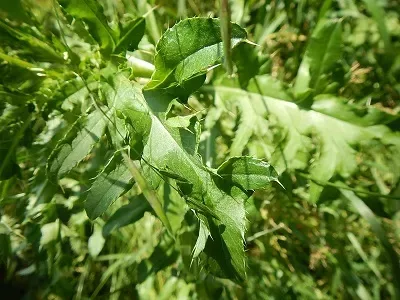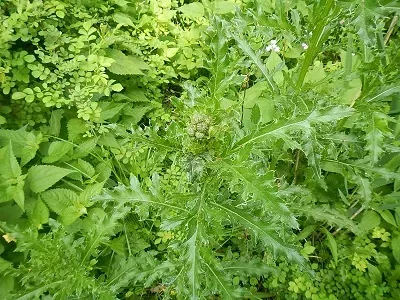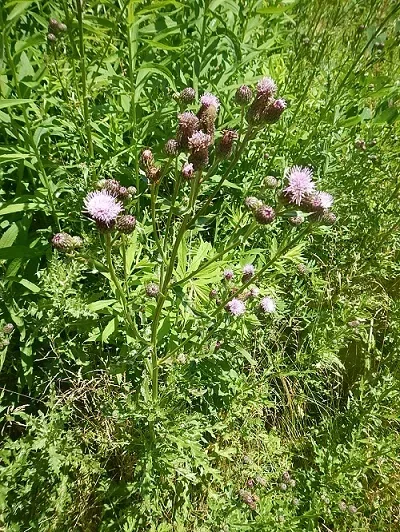
Canada thistle is a perennial thistle that grows 1.5-5 ft. tall, and is distinguished from other thistles by its extensive lateral root system, dense clonal growth, and by having male and female flower heads on separate plants. Flowers are small and light purple (sometimes white) in color. Its pale green leaves are variable, but generally irregularly lobed with many spines along their edges, and are arranged alternately on the stem. The stem is often slightly hairy and ridged.



Canada thistle can respond differently to management activities, so it is often necessary to implement multiple control techniques and continuously monitor their impacts. Canada thistle spreads primarily by vegetative means, and secondarily by seed, which means that mowing may be an effective means of suppression, but will not likely result in eradication or containment of the infestation. Mowing may be paired with a chemical treatment (cut, spot spray) for effective control. Treat entire infestations to prevent future re-sprouting.
